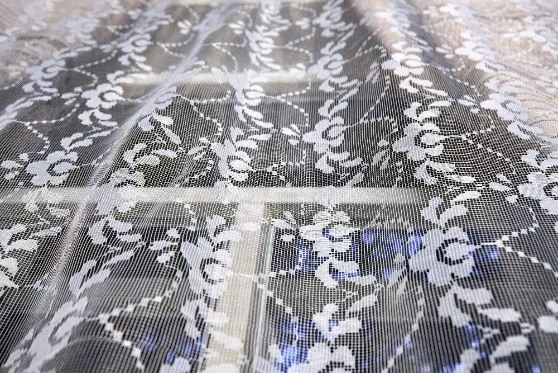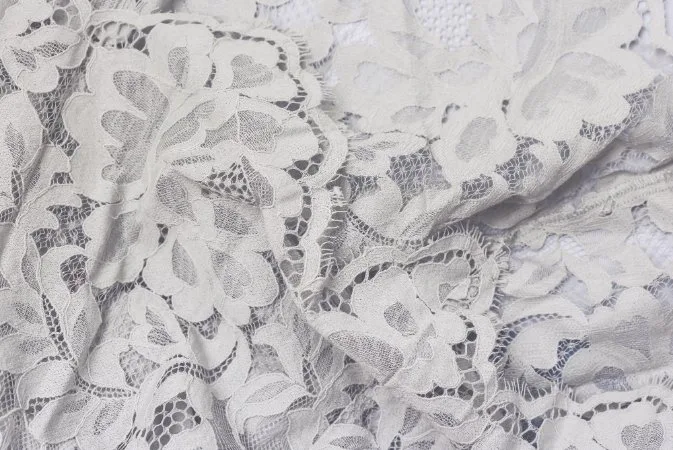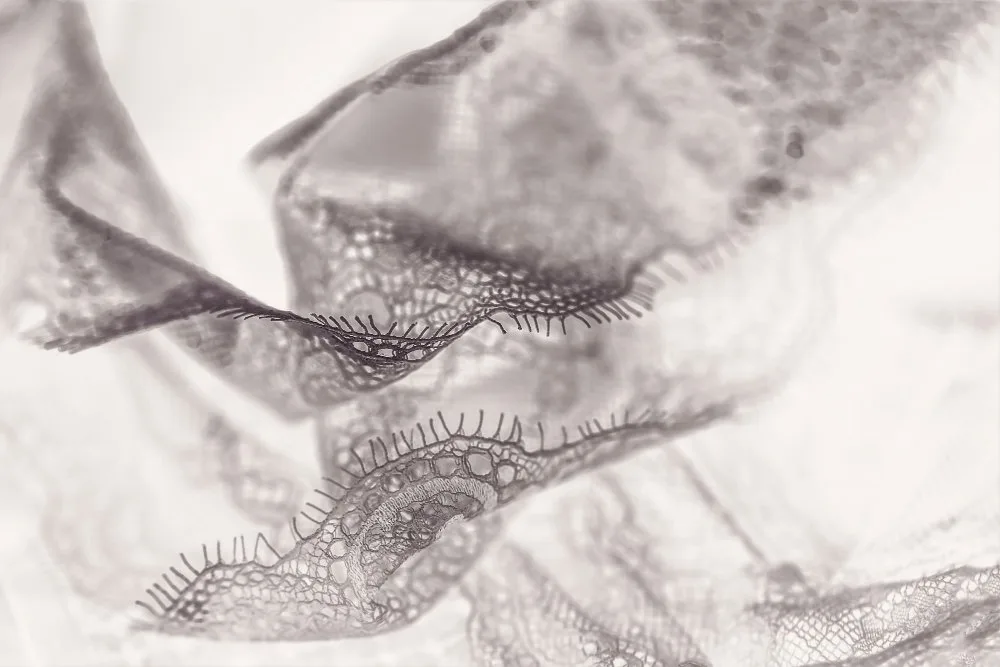Discover the timeless art of filet lace: from 16th-century techniques to modern fashion applications
Table of Contents
Key Takeaways
- Built on a knotted net base rather than solid cloth
- Combines structural netting with decorative stitching
- Requires specialized tools like blunt needles and gauge sticks
- Offers design flexibility for all skill levels
- Maintains historical methods in modern applications
- Different from filet crochet, which creates net-like effects using only crochet stitches
Few textile arts have survived centuries while maintaining their original techniques unchanged. Filet lace embroidery, dating back to the 16th century, still uses the same knotted net foundation artisans employed during the Renaissance. This delicate craft transforms simple threads into intricate patterns, blending structural precision with artistic flair.
Unlike other decorative textiles, this method starts with a pre-made grid of knots. Skilled hands then weave designs using a blunt needle, creating everything from floral motifs to geometric shapes. The result? A lightweight yet durable material that balances functionality with timeless elegance.
Modern creators appreciate its adaptability. While rooted in tradition, the technique now appears in haute couture dresses, minimalist home accents, and even mixed-media art installations. Its openwork structure allows for creative experimentation while preserving historical authenticity.
Understanding Filet Lace: History & Origins
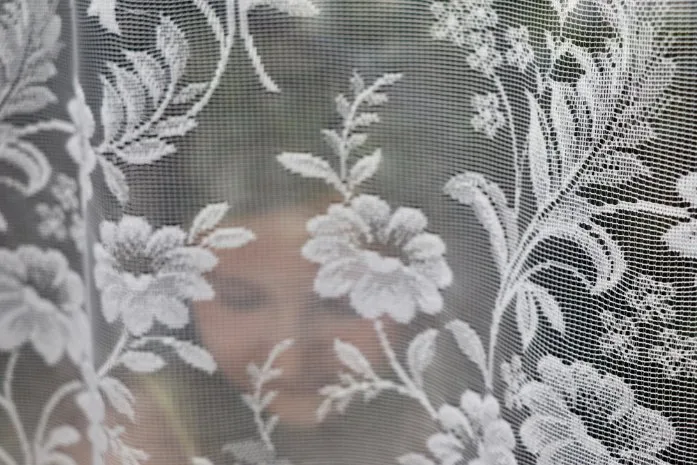
The journey from practical tool to artistic medium began with simple fishing nets. Coastal communities worldwide discovered that knotted grids could hold more than fish—they became canvases for cultural expression. This evolution transformed survival gear into symbols of status and craftsmanship.
What is Filet Lace?
Filet lace is a decorative needlework technique that involves embroidering patterns onto a foundation of knotted net. The term “filet” comes from the French word for “net,” reflecting its fundamental structure. This lace-making technique creates intricate designs through the strategic filling of mesh openings with thread, producing both solid and open areas that form recognizable patterns.
Basic Net Reinforcement – Early net-makers used hemp and animal sinew to create functional fishing and hunting nets.
Decorative Stitching Emerges – Women began enhancing grids with decorative stitches using cotton and linen threads, turning functional items into hair accessories and table linens.
Historical Documentation – Exeter Cathedral’s inventory lists four pieces of filet lace, proving its value in religious settings.
Pattern Standardization – Federico de Vinciolo’s collection introduced geometric precision with instructions for 50 distinct designs.
Regional Influences and Variations
Pattern books revolutionized the craft during the Renaissance. Mediterranean weavers favored floral motifs, while Northern Europeans leaned toward symbolic animal shapes. These regional preferences created distinct styles that influence modern interpretations.
What is the Origin of Filet Lace?
The origins of filet lace trace back to ancient net-making techniques used for practical purposes like fishing and hunting. Archaeological evidence suggests that decorative netting existed in ancient Egypt and Greece, but the structured approach we recognize today developed in medieval Europe. The technique gained prominence in Italian convents during the 15th century, where nuns created elaborate pieces for religious ceremonies.
Properties and Characteristics of Filet Lace Fabric
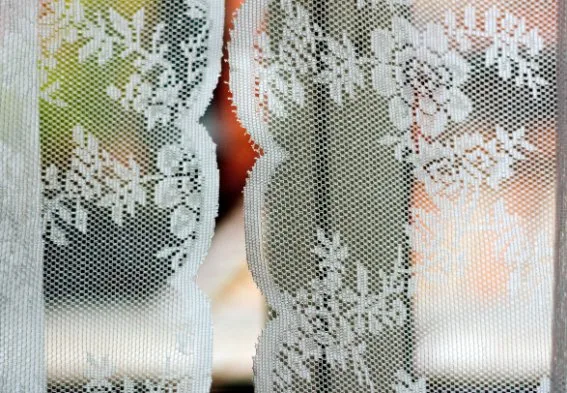
This textile art balances mathematical precision with creative freedom. Its defining features stem from structured netting systems combined with decorative stitching techniques.
Material Characteristics and Mesh Designs
The foundation begins with square or diamond-shaped openings formed by tightly knotted threads. Artisans either craft these meshes by hand or use pre-made nets. Machine-produced options dominate modern markets, but purists argue hand-tied versions offer superior durability.
| Gauge Size | Thread Type | Common Uses | Difficulty Level |
|---|---|---|---|
| 1.5 mm | Silk | Jewelry, fine accessories | Advanced |
| 3 mm | Cotton | Table linens, curtains | Intermediate |
| 5 mm | Wool | Tapestries, rugs | Beginner |
Can Filet Lace be Machine Made?
While the net foundation can be machine-produced, traditional filet lace embroidery requires hand stitching for authentic results. Modern manufacturing creates machine-embroidered versions that mimic the appearance, but these lack the subtle irregularities and character of handmade pieces. Some contemporary artists combine machine-made nets with hand embroidery for efficiency.
Textural Details and Pattern Variations
Stitch density creates visual contrast. Densely worked areas appear solid, while open sections let light pass through. This interplay makes the material perfect for lampshades or room dividers needing semi-transparency.
Example of simple filet lace pattern grid (filled squares in teal, empty squares in white)
Types and Variations
Is Filet Crochet Lace?
This is a common source of confusion. Filet crochet and traditional filet lace are different techniques that create similar visual effects:
| Aspect | Traditional Filet Lace | Filet Crochet |
|---|---|---|
| Foundation | Pre-made knotted net | Crocheted mesh created as you work |
| Primary Tool | Blunt embroidery needle | Crochet hook |
| Technique | Darning/embroidery stitches | Chain and double crochet stitches |
| Historical Period | 14th century onwards | 19th century development |
What Does Filet Crochet Look Like?

Filet crochet creates a grid-like appearance using alternating blocks of solid double crochet stitches and open chain spaces. The patterns typically feature geometric or pictorial designs, with solid blocks forming the design and open spaces creating the background. Common motifs include roses, butterflies, alphabets, and religious symbols.
Traditional Regional Styles
Different regions developed distinct characteristics:
- Filet Richelieu – Features organic, flowing designs with strategic negative spaces
- Filet Guipure – Emphasizes geometric patterns and complex weaving techniques
- Italian Filet – Known for religious motifs and fine thread work
- French Filet – Characterized by delicate floral patterns
What is the Difference Between Filet and Faux Filet?
True filet lace uses a genuine knotted net foundation, while faux filet creates the appearance of filet lace through other methods like machine embroidery on tulle or printed fabrics. Faux filet lacks the structural integrity and three-dimensional quality of authentic hand-worked pieces, though it serves decorative purposes at a lower cost.
Step-by-Step Guide to Working with Filet Lace Fabric
Creating intricate designs with knotted netting requires precision from the first step. Proper setup ensures clean results, whether crafting heirloom pieces or modern decor.
🎥 Video Tutorial: Filet Mesh Techniques
This beginner-friendly tutorial demonstrates filet crochet techniques. While traditional filet lace uses embroidery on knotted net, the grid-based pattern principles shown here are directly applicable to understanding how filet designs are constructed.
Video by Kenikse Crochet – demonstrates mesh construction and pattern creation techniques
Prepare and Anchor the Net
Secure your net foundation using a heavy cushion or C-clip. Stretch it tightly on an embroidery frame to prevent sagging. Consistent tension prevents uneven stitches and maintains geometric accuracy.
Choose Your Tools
Select tools based on project scale. A shuttle needle works best for hand-made nets. For pre-made grids, choose a blunt needle that slides smoothly through holes. Match gauge size to thread thickness.
Master the Darning Stitch
The darning stitch forms the backbone of most designs. Weave threads over and under the net’s square openings to create solid areas. Practice on scrap netting first to perfect tension control.
Transfer Your Pattern
Use grid paper matching your net’s mesh count. Mark filled squares with colored pencils. For complex designs, plan thread paths to minimize breaks and maintain clean lines.
Essential Stitching Techniques
| Stitch Type | Thread Usage | Visual Effect | Common Applications |
|---|---|---|---|
| Darning | High | Solid filled areas | Main design elements |
| Linen | Medium | Textural contrast | Background details |
| Running | Low | Linear outlines | Pattern borders |
Essential Tools and Materials
Mastering this craft begins with selecting the proper implements. The right combination of threads, needles, and netting determines both creative possibilities and technical success.
Thread Selection Guide
Pearl Cotton threads remain the gold standard. Different sizes work better with specific mesh counts:
Size 3 Thread
Best for: 6-hole nets
Projects: Wall hangings, bold designs
Skill Level: Beginner friendly
Size 5 Thread
Best for: 9-hole nets
Projects: Table runners, curtains
Skill Level: Intermediate
Size 8-12 Thread
Best for: 14-hole nets
Projects: Jewelry accents, delicate work
Skill Level: Advanced
Why is Filet More Expensive?
Several factors contribute to filet lace’s higher cost compared to machine-made alternatives:
- Time Investment: Hand embroidery requires 10-50 hours per piece depending on complexity
- Skill Requirements: Years of practice needed to achieve professional quality
- Material Quality: Premium threads and hand-knotted nets cost significantly more
- Cultural Value: Historical techniques command premium pricing
- Limited Artisans: Few people master traditional techniques, creating scarcity
Needle Selection
Needle choice impacts workflow significantly. Blunt needles prevent snagging, while ballpoint reweaving needles glide through tight spaces. A tapestry needle works for basic stitches if its eye accommodates the cord.
Net Material Options
Modern crafters choose between hand-tied and machine-made nets. Dense 14-hole grids enable photorealistic patterns, while 6-hole versions create striking geometric pieces. Always test net stretch before starting complex designs.
Adjustable frames outperform traditional wire models for tension control. Store nets flat to prevent warping, and inspect threads for colorfastness. Quality tools make the difference between frustration and success.
Advanced Techniques and Design Inspirations
Elevating traditional needlework requires both technical skill and imaginative vision. Artisans transform basic grids into showstopping creations through strategic stitch combinations and material experimentation.
How to Filet Knit
Filet knitting adapts the visual principles of filet lace to knitted fabric. This technique uses knit and purl stitches to create solid and open areas that mimic traditional filet patterns. Unlike embroidered filet lace, filet knitting builds the design into the fabric structure itself using yarn overs for open spaces and knit stitches for solid areas.
Edge, Running, and Linen Stitches
Mastering border techniques begins with the edge stitch. This method interlaces threads through existing embroidery and net holes, creating crisp outlines. For curved designs, maintain even tension to prevent puckering.
The linen stitch adds textural contrast through diagonal threading patterns. Combine it with running stitches for botanical motifs—straight lines mimic stems while zigzag fills suggest leaves. Plan thread paths carefully to minimize visible knots.
| Stitch Type | Threads Used | Visual Effect | Best Applications |
|---|---|---|---|
| Edge | 2 contrasting colors | Defined borders | Frame elements |
| Running | Single color | Linear elements | Stem work, outlines |
| Linen | Variegated yarn | Textured fills | Background areas |
Color and Texture Customization
Modern creators break from tradition using iridescent threads and fabric strips. Recent trends involve weaving metallic cords through key design elements to catch light. For subtle dimension, alternate matte and glossy fibers within the same row.
@fortuneknotdesigns Advanced filet lace techniques and creative adaptations
♬ original sound – fortuneknotdesigns
Regional techniques offer fresh approaches. The French filet Richelieu method uses strategic knots to create lacy negative spaces. Scandinavian variations employ wool threads for cozy wall hangings. Always test new materials on scrap netting before committing to full projects.
How Hard is Filet Crochet?
Filet crochet is considered one of the easier lace techniques to learn. It uses only two basic stitches: chain stitches for open spaces and double crochet for filled blocks. Beginners can master simple patterns within a few hours, though complex pictorial designs require more experience. The main challenge lies in maintaining consistent tension and counting accurately.
Modern Applications and Contemporary Uses

Today’s designers seamlessly blend historical techniques with contemporary aesthetics, proving that traditional crafts remain relevant in modern contexts.
What is Filet in Clothing?
In modern clothing, filet refers to garments or decorative elements created using filet lace techniques. This includes:
- Evening Wear: Delicate overlays on formal dresses and gowns
- Bridal Fashion: Veils and dress details combining tradition with elegance
- Casual Wear: Summer tops and cardigans with filet-inspired patterns
- Accessories: Shawls, scarves, and wraps featuring openwork designs
Fashion Industry Applications
Haute couture houses increasingly incorporate filet-inspired techniques into their collections. The openwork structure provides visual interest while maintaining breathability—perfect for summer collections. Contemporary designers also appreciate the technique’s sustainability, as it transforms simple materials into luxury textiles.
Unlike mass-produced lace fabrics, filet work offers customization possibilities. Designers can create unique patterns that reflect brand identity or seasonal themes. The technique also complements other specialized lace types like guipure and Chantilly lace in mixed-media pieces.
Interior Design Applications
Modern interior designers value filet lace for its light-filtering properties and architectural possibilities:
- Window Treatments: Curtains that provide privacy while allowing light
- Room Dividers: Panels that separate spaces without blocking airflow
- Wall Art: Framed pieces that add texture and visual interest
- Table Linens: Runners and placemats for elegant dining settings
Art and Mixed Media
Contemporary artists push filet lace boundaries through experimental materials and concepts. Some incorporate recycled fishing nets—a nod to the craft’s origins. Others combine traditional techniques with modern synthetic fabrics for durability and color options.
Care and Maintenance
How to Wash Filet Crochet
Proper care extends the life of filet work significantly. Follow these guidelines for different materials:
Hand Washing (Recommended)
- Fill a basin with cool water and gentle detergent
- Submerge the piece and gently swish—never wring or twist
- Rinse thoroughly in cool water until soap residue disappears
- Press between clean towels to remove excess water
- Lay flat on a blocking board to dry, pinning to original shape
Storage Best Practices
- Store flat between acid-free tissue paper
- Avoid plastic bags which trap moisture
- Check periodically for pest damage
- Keep away from direct sunlight to prevent fading
How to Stiffen Filet Crochet
Some projects benefit from stiffening to maintain their shape:
- Starch Solution: Mix 1 part liquid starch with 1 part water for light stiffening
- Sugar Water: Traditional method using 2 cups water to 1 cup sugar
- Commercial Stiffeners: Specialized products designed for needlework
- Fabric Stiffener Spray: Convenient for small projects or touch-ups
Apply stiffening solution while the piece is damp, then block to final dimensions. This technique works particularly well for doilies and decorative elements that need to hold their shape.
Frequently Asked Questions
Conclusion
Professional Recommendations
After exploring the rich history and techniques of filet lace, several key insights emerge for both beginners and experienced crafters:
Essential Success Strategies
- Start Simple: Master basic darning stitches on large-gauge nets before attempting complex patterns
- Invest in Quality: Premium threads and proper tools make a significant difference in final results
- Practice Tension Control: Consistent thread tension creates professional-looking finished pieces
- Plan Your Path: Map out stitching sequences to minimize thread breaks and knots
- Embrace Imperfection: Hand-worked irregularities add character that machines cannot replicate
The Enduring Appeal
Through centuries of innovation, this knotted net-based craft continues to captivate creators worldwide. Its unique blend of geometric structure and artistic freedom makes it perfectly adaptable across eras and cultures. Modern makers honor tradition while experimenting with metallic threads, bold color palettes, and contemporary materials.
The technique’s durability stems from its practical origins. What began as reinforced fishing nets now graces haute couture runways and gallery walls. Each piece tells a story through calculated stitches and intentional negative space, connecting us to generations of skilled artisans.
Looking Forward
As sustainability becomes increasingly important in fashion and crafts, filet lace offers an attractive alternative to mass-produced textiles. Its slow-fashion principles align with contemporary values while preserving cultural heritage. The technique also adapts beautifully to modern applications—from architectural installations to wearable art.
Essential tools like blunt needles and precise grids remain unchanged, proving that timeless methods continue to thrive in our digital age. Beginners can master basic darning patterns within hours, while experts push boundaries through mixed-media integrations and experimental approaches.
Taking the Next Step
Whether you’re drawn to historical preservation or contemporary innovation, filet lace offers endless creative possibilities. The balance between structure and freedom ensures the craft stays relevant without losing its essential character. As new generations discover this art form, they write fresh chapters in its enduring legacy.
The design language of knots and voids continues evolving, bridging past craftsmanship with future creativity. For those interested in exploring related techniques, consider investigating needle lace or Alençon lace for additional historical context.
Ready to Start Your Filet Lace Journey?
Recommended First Project: A simple 6-inch square using size 5 cotton thread on 3mm gauge net. Choose a basic geometric pattern with equal amounts of filled and open spaces. This builds confidence while teaching fundamental techniques.
Essential Beginner Kit:
- One yard of 3mm gauge machine-made net
- Size 5 pearl cotton in white or natural
- Size 22 tapestry needle
- 6-inch embroidery hoop
- Sharp scissors for thread cutting
From heirloom table linens to avant-garde installations, the possibilities truly are endless. As you embark on this creative journey, remember that each stitch connects you to a tradition spanning over six centuries—yet the future remains unwritten, waiting for your personal contribution to this remarkable craft.

